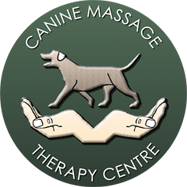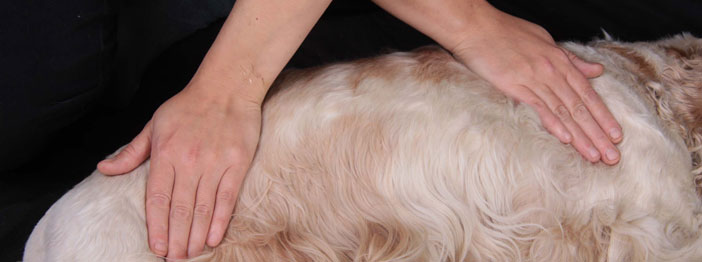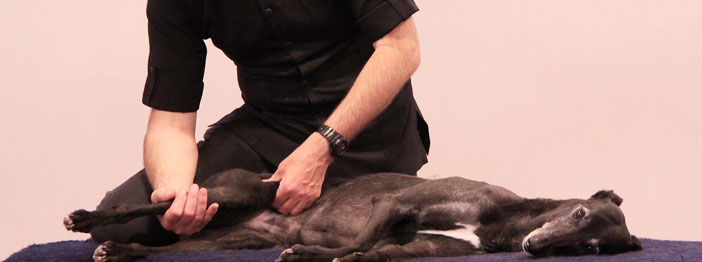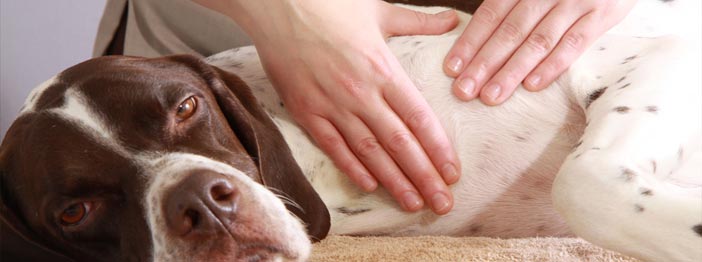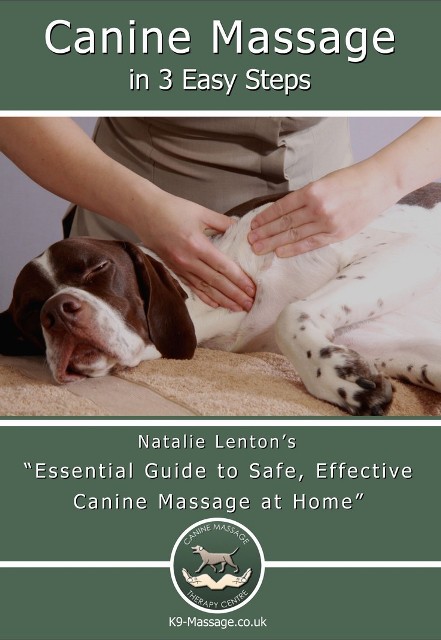Clinical Canine Massage Significantly Reduces Pain Severity in Dogs, Study by University of Winchester Finds
Published in Vet Record
15 June, 2021



The findings from the first ever large-scale study into the efficacy of clinical canine massage on the treatment of pain have been published in Vet Record, the official journal of the British Veterinary Association (BVA). The study, a collaboration between the Canine Massage Guild and the University of Winchester, is the first of its kind to produce clinically verifiable evidence from a cohort of 527 cases.
Dr Lisa Riley, Lecturer in Animal Welfare, comments, “To our knowledge, this is the most comprehensive quantitative analysis of the effects of canine massage therapy to date globally. By reviewing owner- and practitioner-rated pain severity scores we have shown that, in our sample of dogs, pain severity significantly reduced after just one massage therapy session and continued to significantly reduce with each subsequent treatment.
“Collectively dog pain severity went from ‘moderate’ to ‘mild’. Importantly, practitioners considered the dogs’ quality of life improves following treatment. This study suggests massage therapy may be a meaningful inclusion in a musculoskeletal pain management plan.
Dr. Riley concludes, “Working with the Canine Massage Guild has been such a positive experience. The knowledge and commitment of the practitioners, and their help and support with this study has been invaluable. I look forward to organising the forthcoming blind clinical trial with the Guild.“
The Methodology
With veterinary consent, Canine Massage Guild practitioners employed the Lenton Method® to treat muscular and myofascial conditions in dogs of all ages and across many breeds. The study looked at whether massage positively affected the quality of life of dogs experiencing chronic pain, lameness, signs of ageing, athletic performance and subclinical signs of pain as reported by owners.

The practitioners were asked to complete a standardised report per dog documenting life history variables (e.g., age, breed, sex), clinical diagnoses and known or deduced aetiologies, and number, severity (score) and improvement status (improved/worsened/no change) of each of 5 principles of pain parameters (gait, posture, ADLs, behaviour, performance) prior to massage therapy and again after a course of three, hour-long massages. Finally, in consultation with the subject’s owner, the practitioner considered post-treatment results and these data were submitted to the University from across the UK, Ireland, and Spain.
Results
Out of 527 dogs, 492 dogs responded to treatment. The variables between cases such as age, breed and conditions were of a diverse enough range to ensure the type of dogs that therapists see in practice were represented. Whilst there are many reasons for whether or not a dog is responsive, this result evidenced that veterinary-diagnosed musculoskeletal conditions responded successfully after clinical canine massage therapy. Positive changes in the dogs’ mobility and behaviours were often observed after just one treatment, increasing with subsequent sessions.

This study is part of a wider suite of studies with the gold standard of double-blind trials already planned with the Canine Massage Guild and Winchester University in the future.
Canine Massage Guild Chair Natalie Lenton says, “To date, the success and popularity of clinical canine massage therapy has been the result of word-of-mouth recommendations and the hard work of individual therapists. Studies such as this will be responsible for not only the stellar growth of our industry but the growth of animal complementary therapies as a whole.
“Publication in Vet Record indicates that the veterinary profession acknowledges the important role of complementary therapies as part of a vet-led, multimodal team and signifies real progression for canine complementary therapists all over the globe.
Natalie concludes, “I would like to thank the hundreds of owners who have entrusted their dog’s care to Guild practitioners and participated in this pioneering collaborative study between the Canine Massage Guild, Canine Massage Therapy Centre, and Winchester University. The improvements seen by owners after treatment employing the Lenton Method® has led to a significant growth in the number of dogs benefiting from this safe and non-invasive therapy. As an organisation committed to evidence-based practice, I believe that the findings of this study will further increase confidence in our unique clinical canine massage methodology.”
To read to full research then click this link to take you to the full article in the Vet Record. Click here.
In order to help veterinary practices meet the demand for clinical canine massage from one of our 150+ therapists using the Lenton Method®, we have created an educational leaflet that takes a deep dive into our code, ethics and methodology. It is available to download here Integrated Veterinary Care Initiative.
